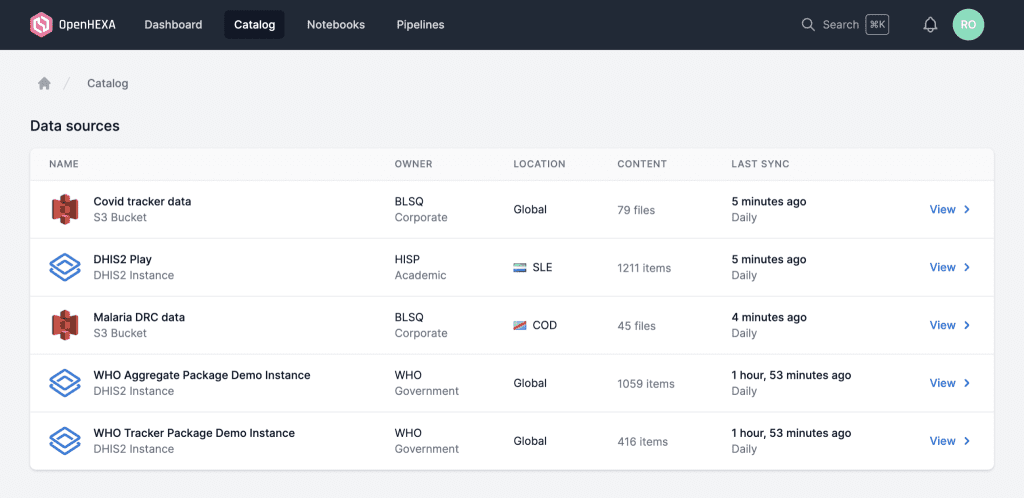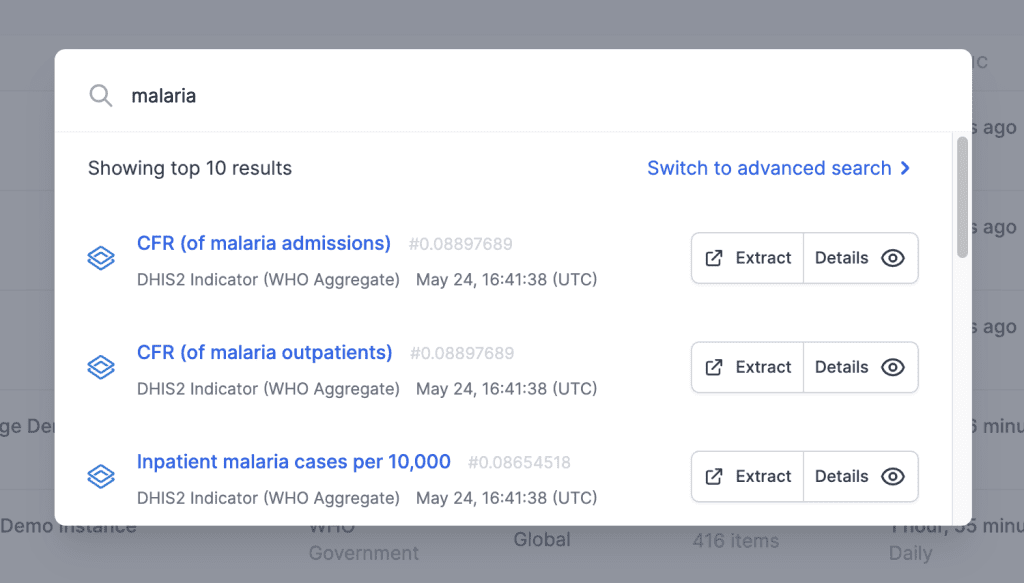
We often hear about the scarcity of health data coming from low resource countries. However, in the last decade, we at Bluesquare have experienced a significant increase in the volume of data collected through the expansion of software solutions such as DHIS2.
With the development of data transmission through multiple communication networks, it can become hard to keep track of all the data that public facilities, private actors, NGOs running campaigns, research projects or logistics systems collect. It is even harder to mobilize these various sources of data to create meaningful analysis and reports. Yet, these can help guide public health decisions.
To help solve this problem, Bluesquare is proud to introduce OpenHexa, our open-source data integration platform targeted at health data professionals.

OpenHexa focuses on four key capabilities:
OpenHexa also provides powerful access control features. These allow you to make sure that users can only see and work on specific data for which they have authorization.
By developing OpenHexa as an open-source platform, we are tackling two challenges:
OpenHexa offers a novel solution that is both integrated and 100% open-source (codebase available on Github). Bluesquare can host the platform in its cloud infrastructure, or you can deploy it yourself on any cloud provider.

Our aim with developing this platform is to offer our current and future partners a tool that enables programs and managers to automate processes that are often manual, time consuming and error-prone. We also had at heart to make it open source and to have a user friendly interface.
Are you as excited about the launch of Openhexa as we are? Participate in the development of the source code on Github or request a demo session with one of our experts.
While not limited to health-centric workflows, our platform has been developed with health data as the primary use case.
OpenHexa offers an ideal environment for local universities, analytical units within Ministries of Health, Institutes of Public Health, National Statistical Institutes or international partners to implement a wide variety of data analysis, at national or sub-national level.
As an example, let’s consider an epidemiologist who wants to improve the national surveillance system for infectious diseases. This system relies on weekly data collection on about 20 diseases collated at the district level. Each week, a data manager manually aggregates data and sends it to the national surveillance team at the MOH. Then analysts from the national surveillance team evaluate the data using Microsoft Excel and try to identify outbreaks.
Thanks to OpenHexa, we have moved from a manual, error-prone process to an automated and reproducible solution. This allows in-country teams to generate better insights into district-level epidemiological trends.